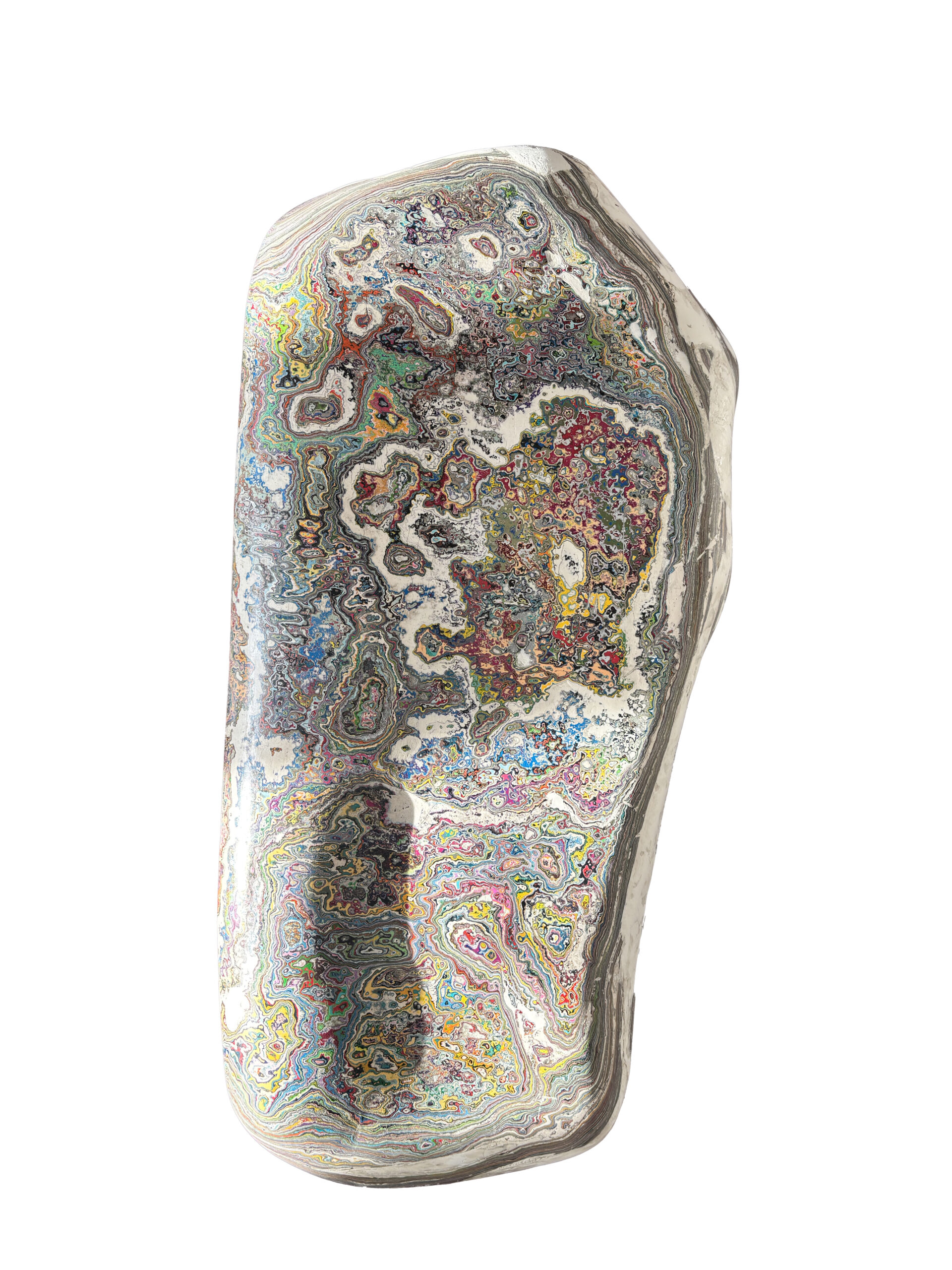Illusio
Berliner Graffiti Fordite stone sculpture* .
104 graffiti artists acrylic spray on wall, (2014-2024) and Giovanni casu (2025)
 Hito Steyerl, in I Dreamed a Dream: Politics in the Age of Art Mass Production, introduces the idea that the phenomenon of art mass production functions as an index for understanding the present historical moment. How has an activity once reserved for a cultural elite evolved into a widespread lifestyle? Has contemporary art taken home the Spectacle Award 2000s, as the best representation of value production?
Hito Steyerl, in I Dreamed a Dream: Politics in the Age of Art Mass Production, introduces the idea that the phenomenon of art mass production functions as an index for understanding the present historical moment. How has an activity once reserved for a cultural elite evolved into a widespread lifestyle? Has contemporary art taken home the Spectacle Award 2000s, as the best representation of value production?
In Berlin, on 29 August 2024, a six-by-four-meter graffiti-covered surface—built up over a decade through the contributions of hundreds of artistssuccumbed to extreme heat, intensified by climate change. Under the intensity of the western sun, the layered paint began to melt, collapsing to the ground like a warm, wet carpet. By the following morning, the mass had re-solidified. Much like the pink ectoplasmic slime in Ghostbusters II, which absorbed and embodied the collective negativity of New York City’s inhabitants, Berlin’s urban fabric appears to absorb and solidify its collective creative energy. Each spray-painted tag becomes an assertion of presence. Historically—and with a touch of irony—the industrial precursor is fordite, a material first formed in Detroit automotive factories in the early 20th century. Layers of excess paint built up on assembly lines, then hardened, were later sliced and polished to resemble natural stones, repurposed as inexpensive costume jewelry. Its aesthetic is inseparable from the conditions of its production. In graffiti culture—where respect and charisma dictate status, and aesthetic mastery is earned amid health risks, legal dangers, and the chronic absence of financial reward—the capitalist drive to survive and succeed under harsh social and economic pressures is articulated through a promise: that individual talent, perseverance, and relentless labor will ultimately lead to recognition. The graffiti writer becomes a paradigmatic figure of contemporary cultural labor: operating largely outside institutional frameworks, navigating risk and precarity, and engaging in a form of sustained self-exploitation. Drawing on Johan Huizinga’s Homo Ludens, Pierre Bourdieu introduces the concept of illusio, to describe a deeply embodied investment in a specific field—be it art, science, or politics. Illusio refers to the belief in the stakes and value of the field itself, a belief that makes otherwise irrational or contradictory behavior appear symbolically rational. Practitioners act not out of delusion, but from participation in an alternative economy. Illusio enables artists and other agents in the field to invest themselves in structures that often extract more than they give back. Even acts of critique, negation, or irony remain structurally productive within this framework. Graffiti fordite sculptures—shaped by art mass production, neoliberalism, institutional ambiguity, and climate change—becomes an accidental archive of artistic labor, urban precarity, institutional tolerance, and the libidinal drive for visibility.
They are fossilized illusio.
1. Steyerl, Hito. I Dreamed a Dream: Politics in the Age of Mass Art Production. HKW, 2013.
2. Ghostbusters II. Directed by Ivan Reitman. Columbia Pictures, 1989.
3. Bourdieu, Pierre. Practical Reason: On the Theory of Action. Stanford University Press, 1998.
4. Huizinga, Johan. Homo Ludens: A Study of the Play-Element in Culturel, 1949.
*extract from the text: Graffiti Fordite Stone Sculptures and the Hexis of Katharina Grosse